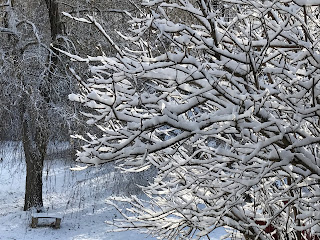 |
Barry Myers, left is Donald Trump's nominee to head
NOAA, of which the National Weather Service is a part. |
As anybody who's read this blog thingy knows, I'm not a big fan of President Donald Trump and his staff.
This extends into his pick to be the next head of the National Weather Service.
As
journalist and weather expert Dennis Mersereau wrote last month, Trump's pick to head NOAA is Barry Myers, the AccuWeather CEO. NOAA, among many other things, runs the National Weather Service.
The pick raises questions of whether there will be renewed efforts to steer the National Weather Service toward more privitazation. To me, that would be dangerous, because privatization could hamper the ability to warn people of severe weather, or at least confuse the public into not taking action when such dangers threaten.
Here's why: God knows the National Weather Service isn't perfect at articulating severe weather threats, but they're still pretty damned good at it. Plus the set of warnings and advisories the NWS puts out for such dangers as floods, hurricanes, tornadoes, winter storms and such has pretty consistent wording, is free and accessible to everybody, and is widely desseminated.
OK, the National Weather Service isn't free. It's taxpayer supported. But we all get the benefits of the service.
Too much privatization and we might not have such access when dangerous weather threatens. Although I doubt Myers would advocate for a worst case scenario like I'm about to described, a lot of hard core free marketers and some of the rich donor class would love the following:
That worse case I've conjured up is we'd have to pay out of pocket for weather forecasts and warnings. The more you pay, the better and more timely the weather forecasts and warnings. In other words, people who can afford timely warnings of, say, an impending tornado would get it. People who can't afford it, well, if they're lucky they'll see the tornado coming. The won't get a warning.
Now, nobody is proposing such a system, but you can see how privatizing the National Weather Service would bring this, as a logical conclusion to a purely free market system.
AccuWeather has a history of pushing for privatization.
AccuWeather in the past has advocated for a 2005 Congressional bill that would have forced the NWS to funnel its data through private weather companies, who would then sell the data back to us. (In effect, we'd pay for it twice, since the data was funded by taxpayers in the first place.
Luckily, this proposal died with little support. Still, for this and other reasons, the
NWS labor union opposes Myers' appointment.
There's nothing wrong with shared data between the NWS and private weather companies. And companies like AccuWeather and The Weather Channel play a very important role already in informing us about and warning us of weather dangers and news. I hope these companies continue on and thrive.
It's just that we need to remember we need a taxpayer funded NWS so that everybody has access to weather news and alerts.
Another issue is climate change. We haven't yet heard what Myers' position on this is, but his company, AccuWeather is an outlier when it comes to meteorology companies' thoughts on climate change.
As Mersereau points out, here's the squishy, cop-out position that AccuWeather has on global warming:
"Global climate change is a matter of intense concern and public importance. There can be little doubt that human beings influence the world's climate. At the same time, our knowledge of the extent, progress, mechanisms and results of global climate change is still incomplete."
This all would be against a backdrop of Trump officials, like EPA head Scott Pruitt, who vehemently deny the existance and reality of climate change.
All this comes at a time when the National Weather Service already faces potentially dangerous staff shortages.
As the Burlington (VT) Free Press pointed out last month, overworked, overwhelmed National Weather Service employees might not be able to issue warnings for such things as flash floods and tornadoes in a timely enough fashion. In those kinds of weather emergencies, the earlier the warning, the more likely you are to save lives.
(Note: The Free Press article I've linked in here is excellent, but you'll have to wade through a series of annoying pop up ads and autoplays to get to it.)
According to the Burlington Free Press:
"'Given our staffing, our ability to fill our mission of protecting life and property would be nearly impossible if we had a big storm,' said Brooke Taber a weather service meteorologist and union steward in South Burlington. "We're confined to just trying to get our daily operations completed. We've been really lucky weather-wise that it's been quiet - knock on wood."
NWS administrators in Washington DC told the Burlington Free Press that concerns over staffing shortages are overblown and they're working quickly to hire more personnel.
However, several members of Congress, including the Vermont delegation, and the General Accounting Office have said the staff shortages risk harming the ability of the NWS to issue timely warnings and alerts. Already, says the GAO, staff shortages at the NWS have "at times led to their inability to complete other tasks, such as providing severe weather information support to state and local emergency managers."
Here in Burlington, Vermont, the NWS should have a staff of 13 and only 7 staffers as if October. However, two more were scheduled to join the South Burlington NWS this month.
The bottom line: We need to do whatever we can to pressure the Trump administration to keep us ready for weather disasters, fund the NWS adequate, and - probably the most difficult of all - trying to get the administration to embrace science, and not their fossil-fuel industry funded fake science.



























